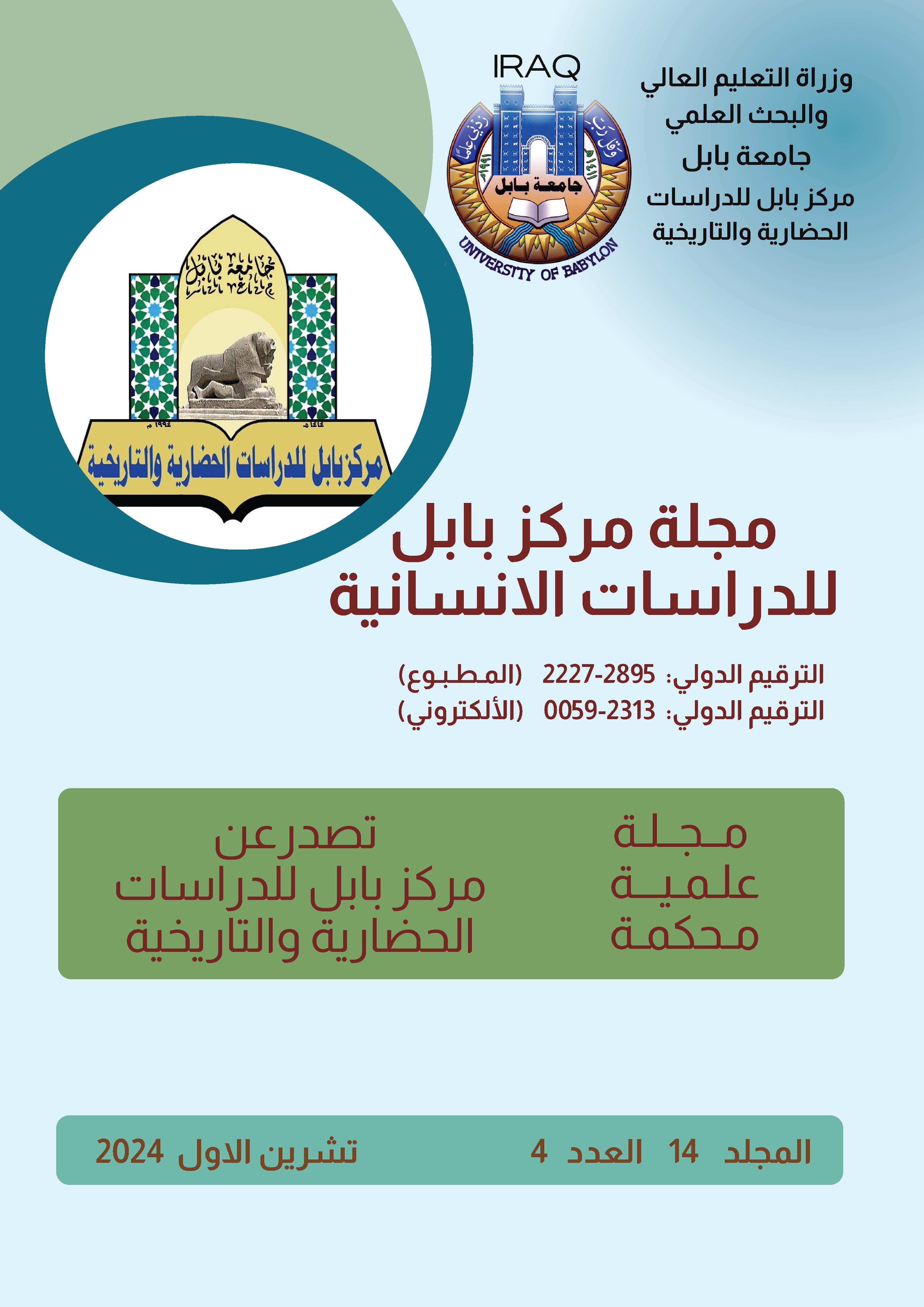Textual Cohesion in the Poem "He Stood by Her" by the Poet Khalifa Al-Telisi
Keywords:
Textual cohesion- Thematic unity- Linguistic coherence- Referential cohesion- IntertextualityAbstract
The poem "Waqafa 'alayha al-Hubb" by the poet Khalifa al-Talisi is considered a distinguished model of textual cohesion in contemporary Arabic poetry. This cohesion is manifested through several prominent elements in the structure of the poem.
First, the thematic unity: The entire poem revolves around a single, integrated theme of love and romance. The poet paints a comprehensive picture of his emotional experience with the beloved woman, starting from the moment of their encounter and standing before her, going through feelings of passion and infatuation, and reaching the separation and longing. This thematic unity lends an organic coherence to the text.
Secondly, linguistic coherence: The poet uses a unified language and consistent grammatical structure throughout the poem. The words and constructions are consistent and harmonious, imparting an integrated aesthetic form to the text. This linguistic coherence is evident in the recurrent use of certain words and phrases, such as the repetition of the words "love," "lips," and "tears," which emphasizes the central idea of the poem.
Thirdly, referential cohesion: The various referential relations (personal, spatial, and temporal) interconnect to form a coherent fabric that binds the parts of the poem together. The pronouns and demonstrative pronouns refer back to previous elements, and the spatial and temporal references define the contextual setting of the successive events.
Fourthly, intertextuality: The poet evokes and utilizes previous poetic texts, which infuses the poem with semantic depth and integrates it with its new context. There are clear references to classical poetic texts, such as the Mu'allaqat and Andalusian Muwashshah, and this intertextuality enriches the poem and connects it to the Arabic poetic tradition.
Thus, an organic unity is achieved in the poem, making it a cohesive and interconnected text on various levels, whether thematic, linguistic, referential, or intertextual. This textual cohesion imbues the poem with a strong structural integrity and distinctive artistic aesthetics.







